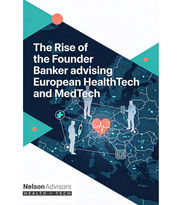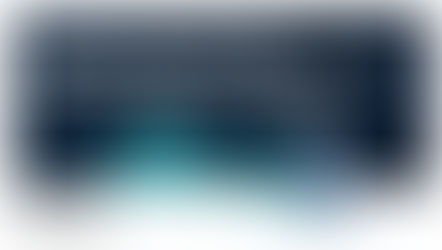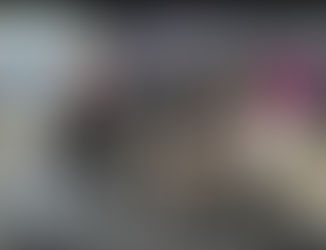Near-infrared spatiotemporal colour vision: One to watch at the cutting edge of HealthTech in 2025
- Lloyd Price
- May 22
- 6 min read

Near-infrared spatiotemporal colour vision: One to watch at the cutting edge of HealthTech in 2025
Near-infrared (NIR) spatiotemporal color vision is emerging as a transformative HealthTech innovation in 2025, with breakthroughs like upconversion contact lenses pushing boundaries. These lenses, developed by researchers at the University of Science and Technology of China, use nanoparticles to convert invisible NIR light (800–1600 nm) into visible light, enabling humans to perceive infrared wavelengths without bulky equipment. Unlike traditional night vision goggles, they’re non-invasive, battery-free, and allow simultaneous visible and infrared vision, even with eyes closed, enhancing applications from medical diagnostics to surgical navigation.
In healthcare, NIR’s deep tissue penetration and low phototoxicity are driving advancements. For instance, folate receptor-targeted indocyanine green (ICG) nanoprobes enable precise tumor margin detection during cancer surgery via fluorescence lifetime imaging in the NIR-II window (1000–1700 nm), offering high spatiotemporal resolution. NIR-responsive hydrogels are also gaining traction for targeted drug delivery, using photothermal and photochemical mechanisms to release therapeutics with pinpoint accuracy, minimising off-target effects in cancer and wound healing. Additionally, NIR-based photobiomodulation shows promise in ophthalmology, slowing myopia progression and aiding wound healing.
Challenges remain, including improving nanoparticle biocompatibility and quantum efficiency. Yet, with the NIR imaging market projected to grow from $285 million in 2019 to $485 million by 2030, and applications expanding into neuromodulation and bio-sensing, this tech is a critical space to watch for revolutionising diagnostics and treatment precision in 2025
Visualisation of NIR light
Near-infrared (NIR) spatiotemporal color vision is a cutting-edge HealthTech innovation in 2025, enabling the visualization of NIR light (800–1600 nm) as perceivable colors for enhanced medical applications. Key developments include:
Upconversion Contact Lenses: Research from the University of Science and Technology of China has produced lenses using lanthanide-doped nanoparticles to convert NIR light into visible light. These non-invasive, battery-free lenses allow simultaneous visible and NIR vision, even with closed eyes, aiding applications like surgical navigation and diagnostics.
Medical Imaging: NIR-II window (1000–1700 nm) imaging, using probes like folate receptor-targeted indocyanine green (ICG) nanoprobes, offers high-resolution, real-time tumor margin detection during cancer surgery due to deep tissue penetration and low autofluorescence.
Therapeutics: NIR-responsive hydrogels enable precise drug delivery for cancer and wound healing, leveraging photothermal and photochemical effects to control release with minimal side effects.
Photobiomodulation: NIR-based therapies show promise in slowing myopia progression and enhancing wound healing, capitalising on low phototoxicity.
The NIR imaging market is expected to grow from $285 million in 2019 to $485 million by 2030. Challenges include improving nanoparticle biocompatibility and efficiency. This technology is poised to transform diagnostics, surgery, and treatment precision in 2025.
Future potential applications of near-infrared spatiotemporal colour vision
Near-infrared (NIR) spatiotemporal colour vision, particularly through recent breakthroughs like contact lenses that convert infrared light into visible colours, holds significant potential for a wide array of future applications across various sectors.
1. Enhanced Human Perception and "Super-Vision"
Night Vision and Low-Light Environments: The most direct application is enabling humans to see in complete darkness or very low-light conditions without bulky traditional night-vision goggles. This is enhanced by NIR light's ability to penetrate eyelids more effectively than visible light, potentially allowing for perception even with eyes closed.
Colour Blindness Correction: By converting specific invisible wavelengths into visible colors, this technology could offer a novel solution for individuals with colour blindness, allowing them to perceive a broader spectrum of colours.
Augmented Reality and Information Display: Flickering infrared light could be used to transmit information, potentially creating a new dimension for augmented reality overlays or discreet communication in security, rescue, or anti-counterfeiting settings.
2. Medical and Healthcare Advancements:
Early Disease Detection and Diagnosis: Near-infrared fluorescence imaging is already used to detect molecular-level changes, aiding in early disease detection (e.g., cancer, vascular abnormalities) and guiding precise tumour removal during surgery. Spatiotemporal insights could further refine the detection of subtle changes over time.
Real-time Surgical Guidance: The ability to differentiate healthy from diseased tissues with higher precision in real-time during surgery can improve surgical success rates and minimise damage to healthy tissue.
Remote Patient Monitoring and Telemedicine: Non-invasive NIR imaging can facilitate remote monitoring of patients, providing accurate diagnoses in virtual settings, especially beneficial for those in remote areas.
Drug Delivery Monitoring: Tracking drug distribution and accumulation within the body in real-time.
3. Agriculture and Food Science:
Precision Agriculture and Crop Monitoring: NIR imaging is already crucial for assessing crop health, detecting drought stress, nutrient deficiencies, and plant diseases (e.g., fungal pathogens) before they are visible to the human eye. Spatiotemporal analysis would allow for tracking these changes over time, enabling proactive interventions.
Soil Analysis: Monitoring soil organic carbon and nutrient content for optimized fertilizer application.
Quality Control in Food Production: Detecting defects, bruises, and ripeness in fruits, vegetables, and other food items, reducing waste and improving quality assessment, potentially at high speeds on production lines.
Livestock Monitoring: Assessing animal health and nutritional properties.
4. Industrial and Manufacturing:
Non-Destructive Testing (NDT) and Quality Inspection: Inspecting internal defects, damage, and structural integrity in materials and products, particularly in electronics (e.g., semiconductor wafers, flip-chip analysis, 3D mounting configurations) where visible light cannot penetrate.
Process Monitoring: Real-time monitoring of industrial processes, including combustion flow analysis and power grid maintenance, for anomaly detection and efficiency optimisation.
Automated Sorting and Robotics: Enabling robots to identify and sort objects based on their NIR spectral signatures, even in challenging lighting conditions.
5. Defence, Security, and Surveillance:
Enhanced Surveillance and Reconnaissance: Providing continuous monitoring in low-light or challenging environmental conditions (smoke, fog, dust) by detecting heat signatures and other infrared properties.
Target Detection and Identification: Identifying objects, vehicles, and personnel based on their infrared signatures, crucial for military and security operations.
Guidance and Navigation: Aiding in vehicle operation and navigation at night or in obscured environments.
The integration of near-infrared spatiotemporal color vision with advancements in AI, machine learning, and miniaturised sensor technology will further expand its capabilities and applications in the future.
Potential applications of near-infrared spatiotemporal colour vision in HealthTech
Near-infrared (NIR) spatiotemporal color vision holds significant future potential across various domains, particularly in HealthTech, driven by its ability to visualize and interact with NIR light (800–1600 nm) in real time. Here are key applications on the horizon:
Enhanced Surgical Precision: Upconversion contact lenses, converting NIR to visible light, could allow surgeons to see through tissues in real time during minimally invasive procedures. This could improve navigation in complex surgeries like neurosurgery, where NIR-II window imaging (1000–1700 nm) can reveal deep structures, such as blood vessels or tumours, without invasive probing.
Non-Invasive Diagnostics: NIR vision could enable continuous, non-invasive monitoring of physiological markers. For example, wearable NIR devices might track glucose levels or oxygenation in tissues by detecting subtle changes in NIR absorption, aiding diabetes management or early detection of conditions like hypoxia.
Advanced Cancer Therapies: NIR-responsive hydrogels could evolve for more sophisticated drug delivery, releasing multiple therapeutic agents in sequence based on spatiotemporal NIR triggers. Combined with NIR vision, this could allow oncologists to monitor and adjust treatment in real time, improving outcomes in precision oncology.
Neuromodulation and Brain Imaging: NIR’s deep penetration could enhance optogenetic techniques, using light to control neural activity. Future NIR vision systems might visualize brain activity patterns in real time, aiding research into neurological disorders like Alzheimer’s or enabling precise interventions in epilepsy treatment.
Regenerative Medicine: NIR photobiomodulation, already showing promise in wound healing, could be scaled to stimulate tissue regeneration. NIR vision could guide the application of light-based therapies to specific cellular targets, accelerating recovery in burns, fractures, or even organ repair.
Augmented Reality for Clinicians: Integrating NIR vision with AR platforms could provide clinicians with a layered view of patient anatomy, combining visible and NIR data. This could revolutionise training, diagnostics, and treatment planning, offering a "superhuman" perspective of the body.
Biosecurity and Pathogen Detection: NIR vision could be adapted to detect pathogens or biochemical threats in real time by visualising specific NIR signatures of bacteria or viruses, enhancing rapid response in pandemics or bioterrorism scenarios.
While challenges like improving nanoparticle safety and imaging resolution persist, the convergence of NIR vision with AI and nanotechnology could unlock these applications, potentially transforming healthcare delivery by 2030.
Nelson Advisors > Healthcare Technology M&A
.
Nelson Advisors specialise in mergers, acquisitions and partnerships for Digital Health, HealthTech, Health IT, Consumer HealthTech, Healthcare Cybersecurity, Healthcare AI companies based in the UK, Europe and North America. www.nelsonadvisors.co.uk
Nelson Advisors regularly publish Healthcare Technology thought leadership articles covering market insights, trends, analysis & predictions @ https://www.healthcare.digital
We share our views on the latest Healthcare Technology mergers, acquisitions and partnerships with insights, analysis and predictions in our LinkedIn Newsletter every week, subscribe today! https://lnkd.in/e5hTp_xb
Founders for Founders > We pride ourselves on our DNA as ‘HealthTech entrepreneurs advising HealthTech entrepreneurs.’ Nelson Advisors partner with entrepreneurs, boards and investors to maximise shareholder value and investment returns. www.nelsonadvisors.co.uk
#NelsonAdvisors #HealthTech #DigitalHealth #HealthIT #Cybersecurity #HealthcareAI #ConsumerHealthTech #Mergers #Acquisitions #Partnerships #Growth #Strategy #NHS #UK #Europe #USA #VentureCapital #PrivateEquity #Founders #BuySide #SellSide
Nelson Advisors LLP
Hale House, 76-78 Portland Place, Marylebone, London, W1B 1NT
Contact Us
Meet Us
Digital Health Rewired > 18-19th March 2025
NHS ConfedExpo > 11-12th June 2025
HLTH Europe > 16-19th June 2025




















































Comments